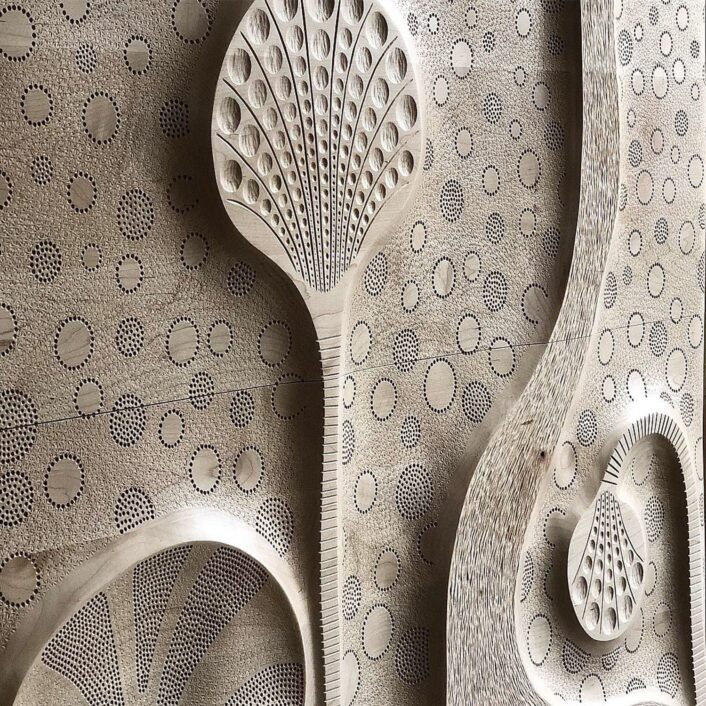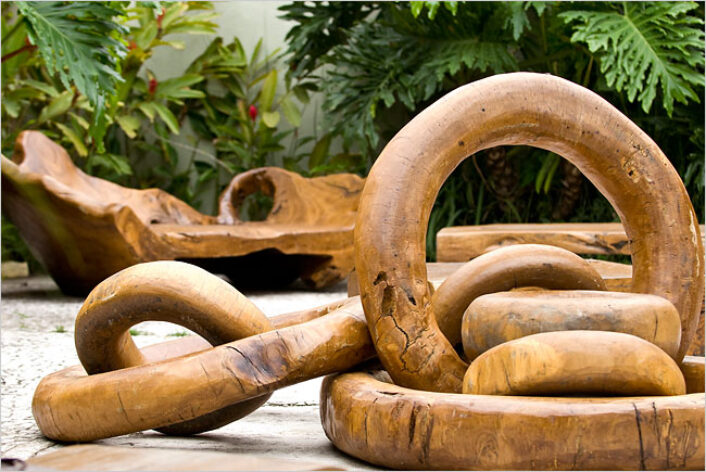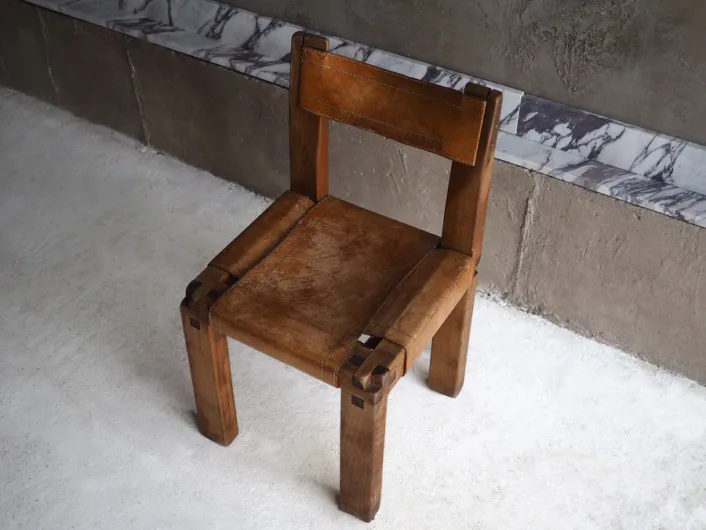Design
Ernst Gamperl
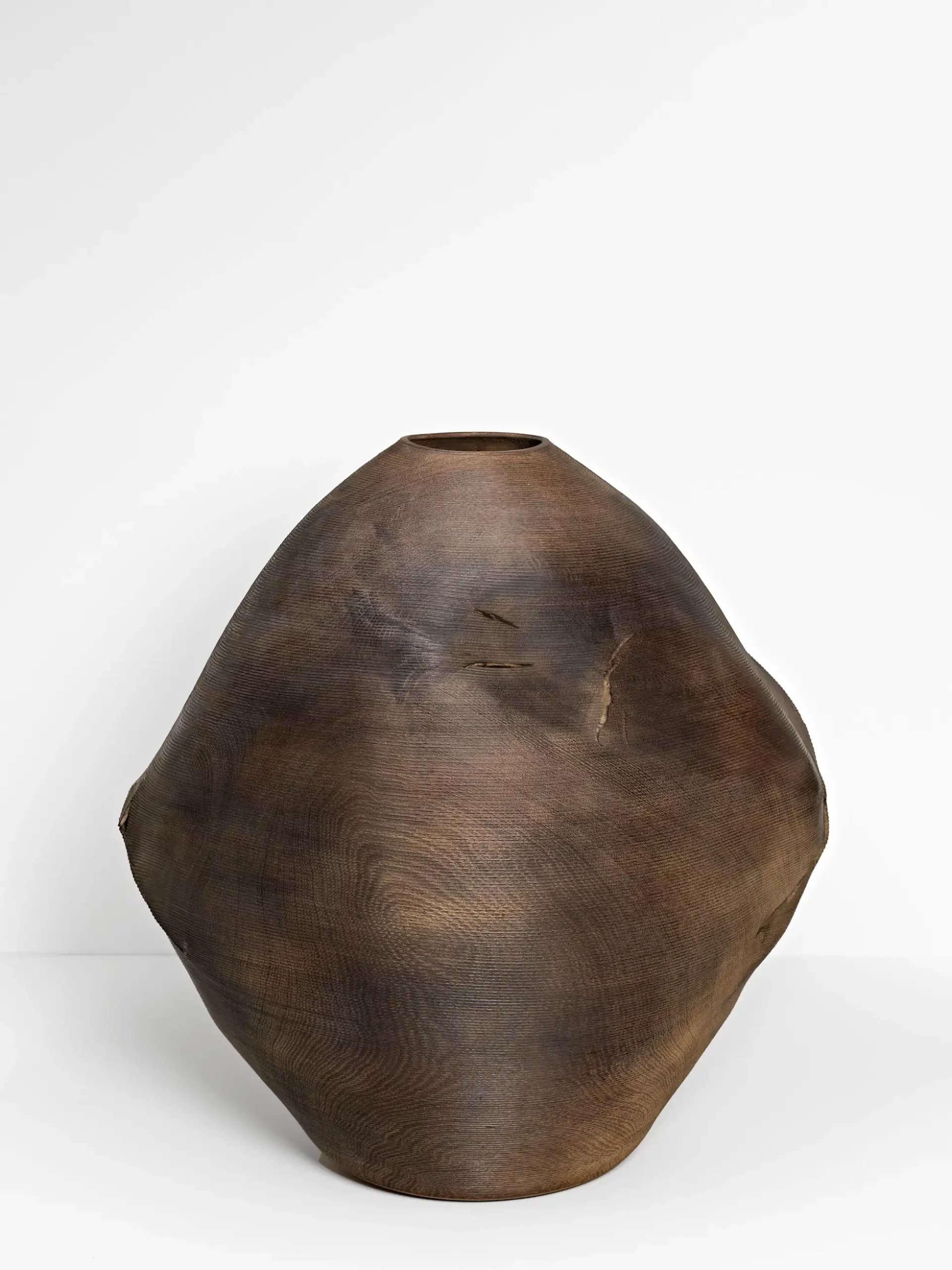
55/2021/300, Houghton 6. English Oak and 12 butterfly keys. From Salon 94 in New York City, circa 2021.
Image courtesy of: Salon 94
Considered a master in wood artistry, the German sculptor Ernst Gamperl happened upon woodworking by pure chance. While training for a career in carpentry, it only took a try with the lathe for Gamperl to realize that he was (courtesy of the artist’s website) “unhampered by convention in his approach to turnery. From the outset he devoted his energies to the same artistic issues he was to toil at ever after.”
Gamperl creates truly amazing objects from solid, hand-selected wooden blocks. His work takes a great deal of patience and craftsmanship. Without straight lines, and always allowing the wood itself to lead the way, Gamperl’s work is always organic, exciting, and dynamic.
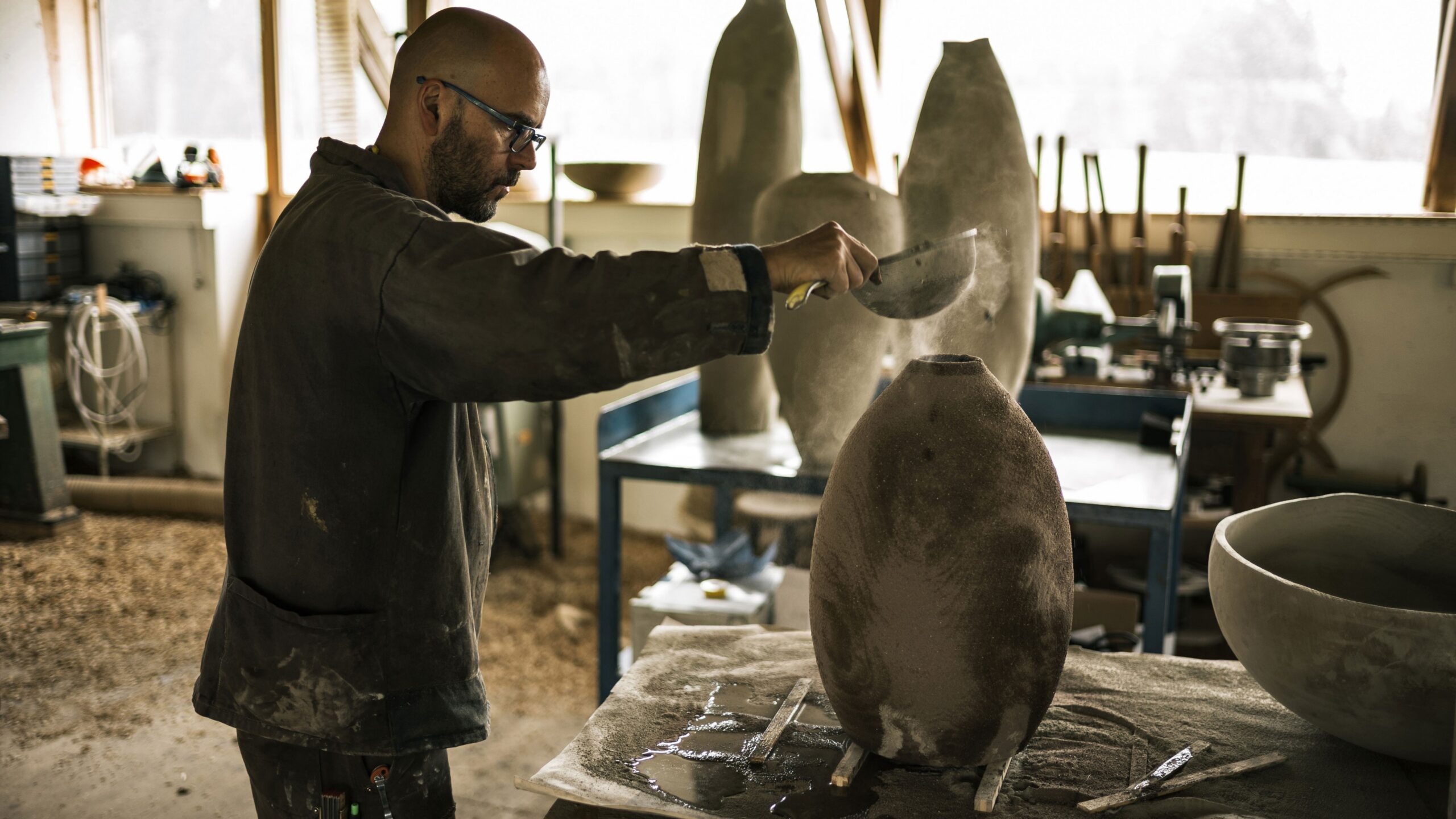
Gamperl at work.
Image courtesy of: Ernst Gamperl
Gamperl’s sculptures are a result of years and years of studying and experimenting with wood. For over twenty years, the sculptor has assessed woods’ drying properties, and how those aspects impact the end-result. More than most wood sculptors, he fully understands that he cannot make the wood conform to what he wants… it has to be a “joint project.”
The woods’ natural deformities… bulges, indentations, projections… emerge from the wood as Gamperl applies his lathe. Those imperfections become the complete opposite… they become integral parts of the design. With some irregular growth formations and fractures, Gamperl “consciously repairs and controls;” however, that only means that the sculpture and the imperfections become one.
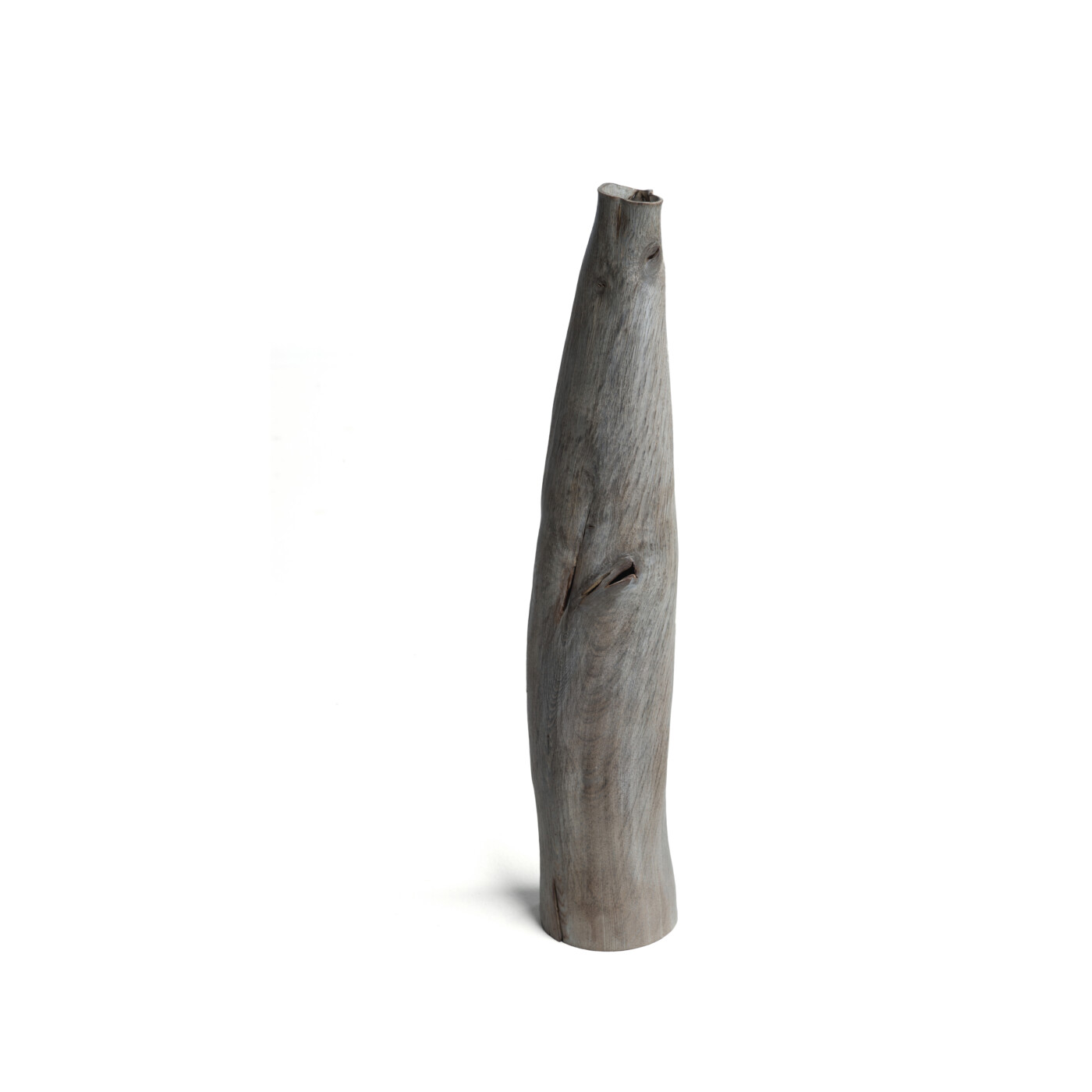
16/2017/130, made from oak, circa 2017.
Gamperl only uses trees that have felled; oftentimes, because of either their age or due to windy conditions.
Image courtesy of: Ernst Gamperl, photographed by: Bernhard Spöttel
In addition to the sculpture’s shape, Gamperl emphasizes the wood’s texture. He has become adept at understanding each wood species’ specific characteristics. Sycamore, for example, has a nearly opaque exterior and is smoothly polished, while European oak is rough and the species vividly demonstrate the woods’ grain. Gamperl works this knowledge into his treatment of the wood. Whether he is waxing, scrubbing, or polishing… he masterfully “expanses the transparency or accentuates the contrast.”
The wood Gamperl uses is from trees which have been standing in one place for decades. Over time, that wood is greatly influenced by whatever it has been exposed to and the soil it lives in. These factors, among others, all have a direct correlation to the wood’s grain and physical characteristics.
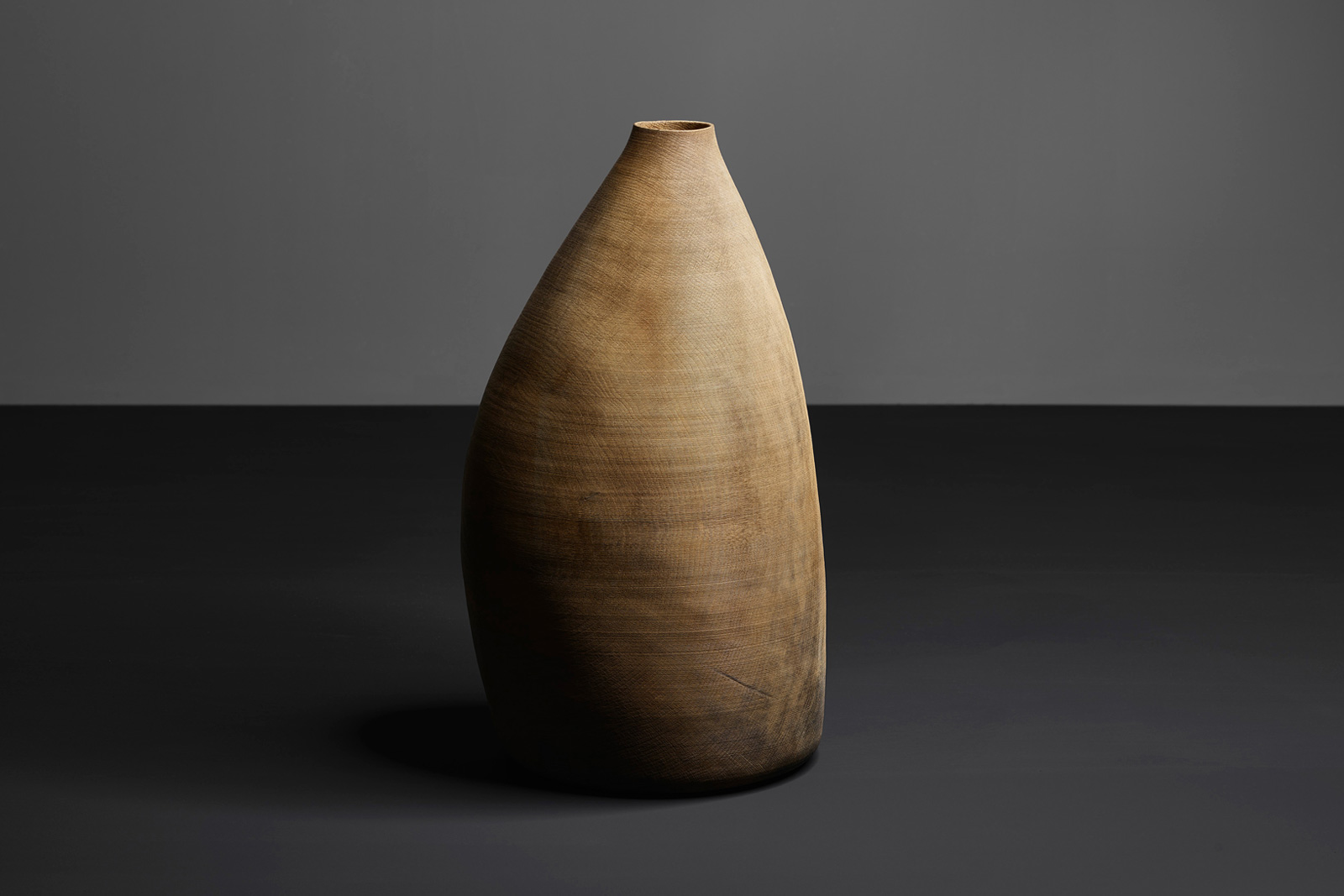
The winning Loewe Craft Prize vessel (from more than 4,000 entries).
Image courtesy of: Craftsmanship Soul, photographed by: Mareike Besch
In 2017, Gamperl won the inaugural Loewe Craft Prize. The sculptor submitted enormous sculptures from a huge oak tree that was uprooted during a storm. Via the treatment of clay, earth, and stone powder, and along with the wood’s natural tannic acid, the finished product had an elegant and organic finish.
Each piece of Gamperl’s work shows the year the piece was made and the tree’s age. Initially, Gamperl used exotic woods; however in recent years, he has come to prefer using wood in proximity to his studios in Germany and Italy. Those species include European oak, beech, maple, and sycamore.
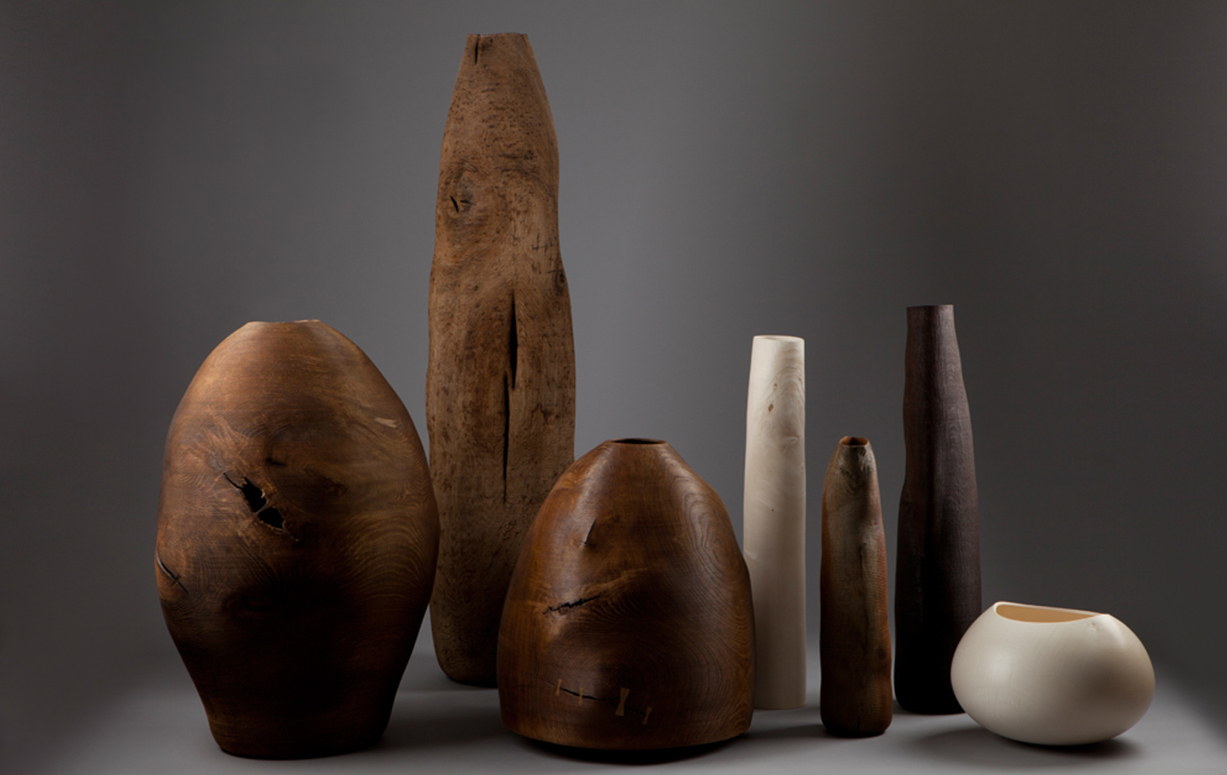
A sampling of vessels.
Image courtesy of: Sidewalk Hustle , (via Ernst Gamperl)
In 2020, Gamperl embarked on his most ambitious project to date; called “Tree of Life,” the “once-in-a-lifetime” experiment transformed a huge 230-year-old oak tree into 67 hewn and wrought vessels. Each piece was different and in collective, it was a wonderful assortment of mastery in woodturning.
The immense size of the oak tree had additional implications… it meant that Gamperl had to refurbish his original studio and build new lathes since there were no turnery machines that would be able to accommodate the tree’s weight and dimensions.
Courtesy of Professor Dr. Florian Hufnagl, The International Design Museum- Neue Sammlung, Germany (courtesy of Sarah Myerscough Gallery), “These vessels are ever tangible, powerfully forceful, fascinating the beholder, who always discovers something new, something different, something never seen before… Gamperl’s great secret lies in the way he seems able to playfully conjure an infinite array of new facets from his medium.”
